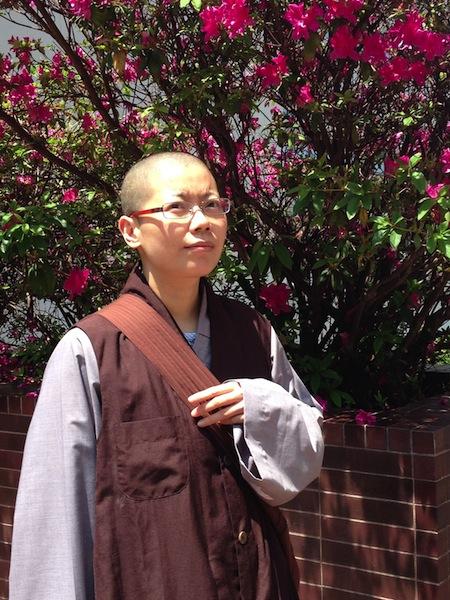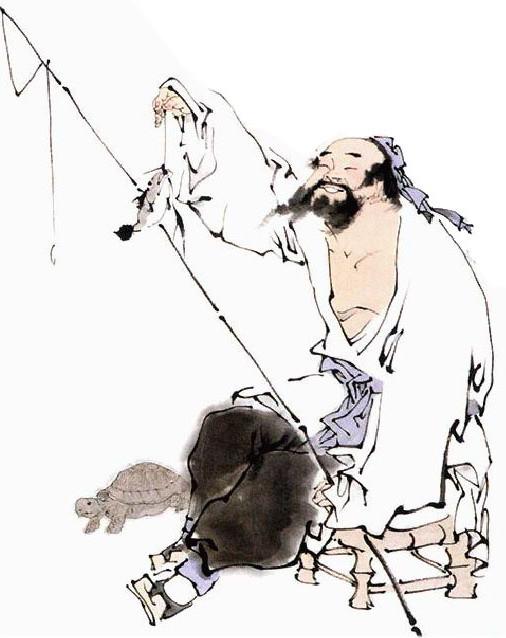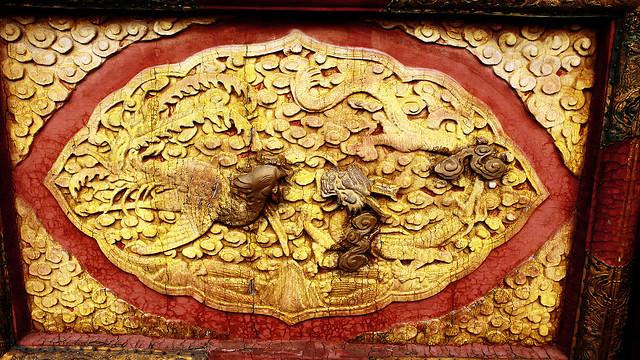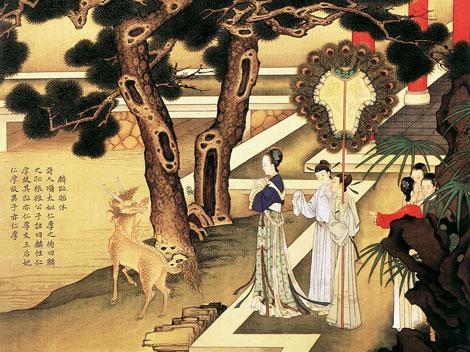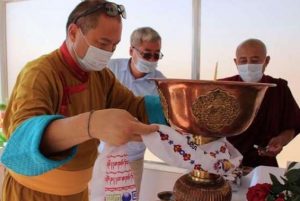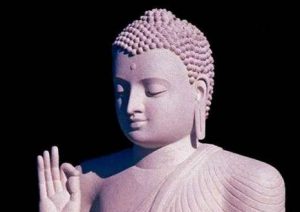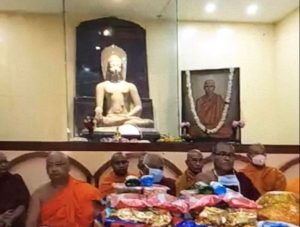Since the parasol tree was believed to be appealing to the phoenix, the Chinese people venerated it as an auspicious symbol. There are records dating as early as the Book of Odes. Zheng Xuanjian of the Eastern Han Dynasty (25 – 220 CE) stated: “the phoenix stops on no trees other than the parasol tree”. Yao Jiheng said in the Introduction of the Book of Odes: “The parasol tree grew in the high mountain facing the sun. The phoenix stopped on the parasol tree and sang. Today, we use the phoenix to mean the high mountain and the parasol tree to mean the sun”. Therefore, the phoenix follows the parasol tree as the mountain’s apex follows the sun.
Zhuang Zhou of the Warring States Period wrote in Zhuang Zi: “The phoenix flew from the south sea to the North Sea, stopping on no trees other than the parasol tree, eating no food other than bamboo and drinking no water but that of the sweet spring”, which reflected the difference between the phoenix and other ordinary birds (1).
In the Former Qin Dynasty (351 – 394 CE), Fu Jian planted thousands of parasol trees and bamboos to attract the phoenix. There is a saying: “plant the parasol tree and attract the golden phoenix”. In Suzhou, the private garden, “Canli Garden”, was famous for the parasol tree planted there. The name came from a poem by Du Fu, an acclaimed Tang poet: “the parrot pecked the abandoned rice and the phoenix stopped on the old parasol tree”. As the ancient people usually related the parasol tree with the phoenix, people today still say that planting the parasol tree will entice the phoenix. This became an auspicious and aesthetic pastime for rich households with courtyards.
With its big, straight trunk, the parasol tree was highly praised by writers in ancient China, who considered it a symbol of upright character. The lone parasol embodied a pure disposition in a corrupt world. This image was circulating by the Wei, Jin and the Southern and Northern Dynasties (220 – 589 CE), and the poems of Song Baozhao, Xie Tiao and Li Qiao all had references to the lone parasol tree. Wang Changling, Bai Juyi, Wang Anshi and Pan Zhen’s poems also described the inner character of the parasol tree and endowed it with the characteristics “haughty and upright”. The image of the phoenix tree also inspired government officials. Officials praised the monk Seng Yu, who introduced the parasol tree to the imperial piazzas. And the common citizenry even linked the appearance of the stars to the planting and growth of these auspicious saplings.
The deer was treated as an auspicious animal in traditional Chinese culture, symbolizing good fortune, happiness and longevity. People still gift their friends and family with boards, scrolls, and hall paintings written or carved with phrases like “longevity like the deer or turtle” or the heads of deer, which invite “auspice, fortune and longevity”. Mythical figures were always graced with young deer beside them. It was said that the god of longevity rode on a deer. In the Tang Dynasty, the city or county governments played the “Deer Bleats” and held deer feasts for successful candidates of the imperial examinations (2).
The deer was a fairytale animal with noble characteristics. Its image of health and vitality can be seen in the traditional Chinese paper-cutting and New Year pictures. It was also beautified and apotheosized by writers and artists into a holy animal, the qilin. Legends of divine deer that can see through human nature have a long history. Masterpieces like the painting of Knights Shooting the Deer from the Han Dynasty, the deer carving lying at the feet of the Buddha, and the deer in the stone paintings of the Shang Dynasty discovered in Bai Cha He of Inner Mongolia are diverse and distinctive. In the Jin Dynasty, nobles used the pattern of the deer as decoration. The description of the nine-colored Deer in the Dunhuang wall painting was adapted into myths and, many centuries later, films (3).
In the eyes of the Chinese people, the deer is a gentle and friendly animal embodying innocence and great beauty, living harmoniously with human beings (especially the spotted deer with its white spots and red-brown fur). In ancient times, only aristocrats and royals had the right to feed and appreciate deer. King Zhou of the Shang Dynasty built a Deer Platform which was “three miles long and thousands of feet high” (4).In the Book of Odes, there was the record of “the king was in the Ling You Hunting Garden, and the deer lay in there” and “stayed together”. The deer were fed for the nobles’ appreciation and kept for hunting, sacrifices and food. Deer bones were used for divination in the Shang Dynasty. Their horns, carved with words, were discovered in the Yin Dynasty Ruins. In the Eastern Zhou Dynasty, it was popular to craft bird or animal monster statues wearing real deer horns for tombs. Deer horns were considered to have magical properties, which would protect the dead in the afterlife. As a symbol of traditional Chinese culture, the golden deer heralded the auspicious confirmation of an eminent monk called Tan Hong.
(1) Zhuangzi, Zhuang Zi, Http://guji.artx.cn/article/9340.html. Passage translated by me.
(2) ?Ouyang Xiu and Song Qi, The New Book of the Tang Dynasty, http://guji.artx.cn/article/3555.html.
(3) Zhan Yuehai, “Image and Narration of Nine-color-deer Story Paintings in Dunhuang Cave 257”, Hundred Schools of Arts 03 (2010): 199.
(4) Liu Xiang, Xin Xu, http://guji.artx.cn/article/7828.html. Passage translated by me.


